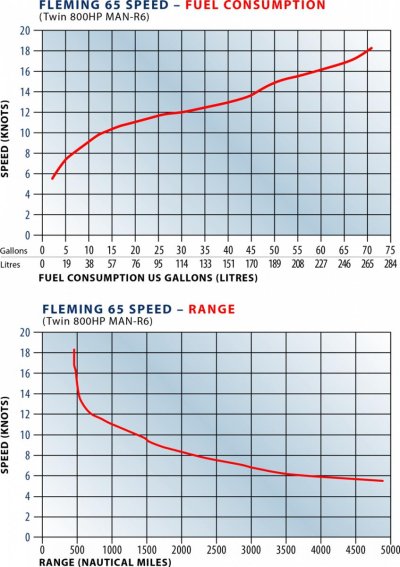There is no inherent stability advantage in what we think of here as a FD hull form vs. SD. In fact probably the opposite. Many racing sailboats are now much closer to our idea of SD than FD (chines, very low deadrise, flat run). Ultimate stability has a lot to do with superstructure and CG. The superstructure of many trawlers, SD and FD, is suspect in heavy weather. But certainly you can build (and there have been built) SD with strong superstructure. CG can be lowered by ballast, but also by taking the top two layers off the 4 layer cake that many of these designs resemble, lowering the tanks, engine, and batteries, etc. Purpose built, an SD hull could be water ballasted for transoceanic stability, then pumped out - that is the way ships do it. I'll stick to my point - there is no inherent difference between the two hull forms WRT seaworthiness.
Modern sailboat sterns look an awful lot like SD trawlers. They cross oceans routinely. More than a few modern sailboats are planing hull forms - nearly all the racing ones are. Lying ahull used to be something people would do but it has greatly fallen out of favor due to a large body of experience (and tank testing) suggesting it is a bad idea - regardless of hull form. At Southhampton University they proved that a boat abeam to seas can be capsized by a breaking wave equal to (or a bit less than) its beam - and hull form made no difference. The explanation is in breaking wave dynamics which make stability almost a don't care at a certain wave size. A much better passive storm survival tactic is to lay to a parachute sea anchor or Jordan series drogue. Active tactics are better as long as you can stay awake, the problem here with most trawlers is they steer poorly due to small rudders (compared to sailboats).


